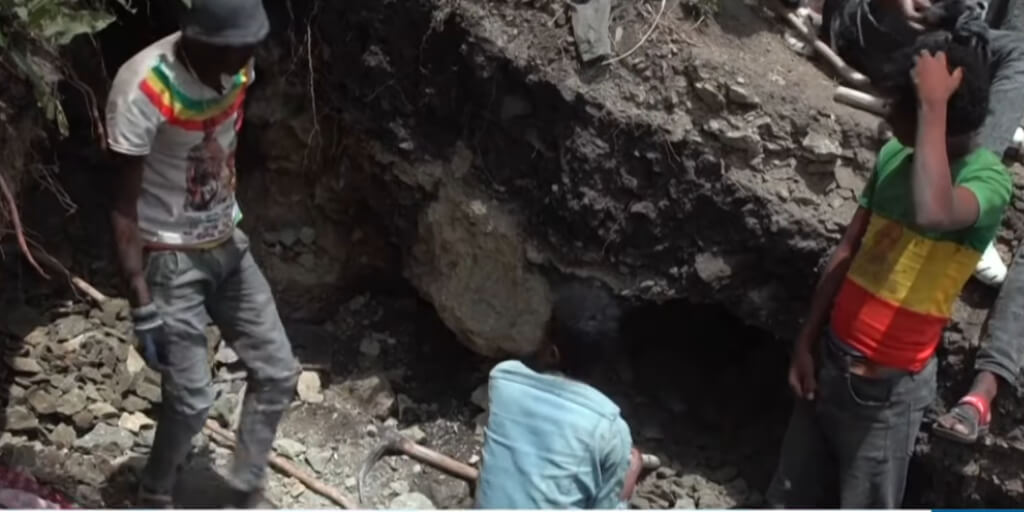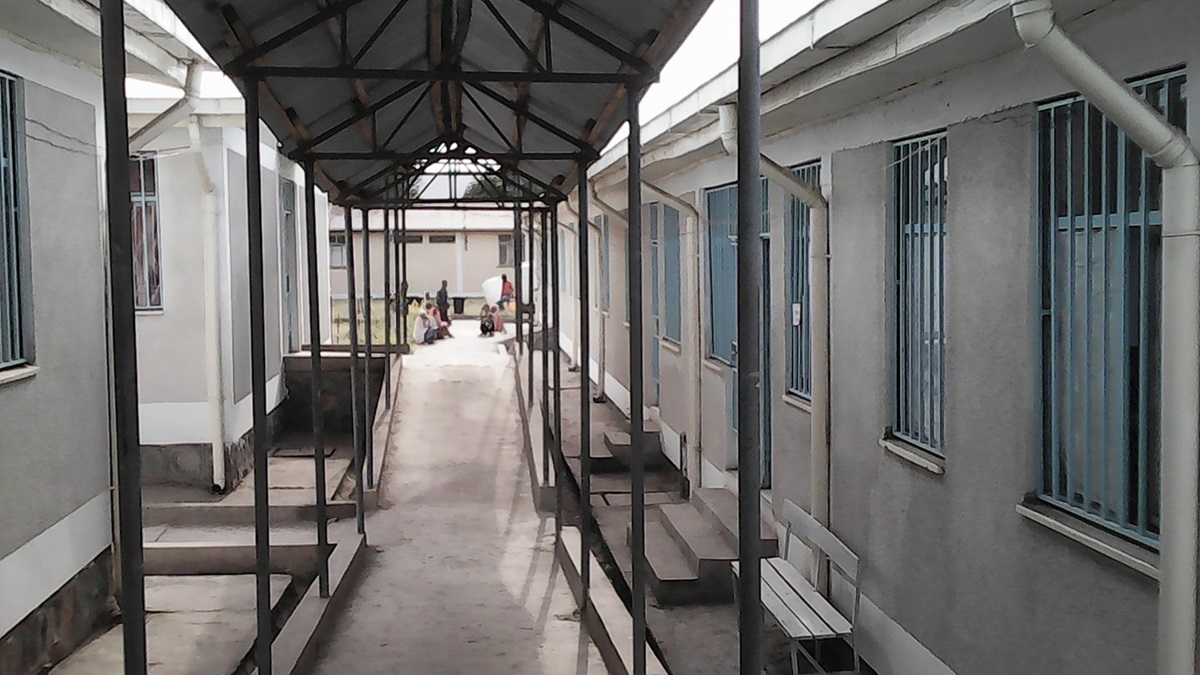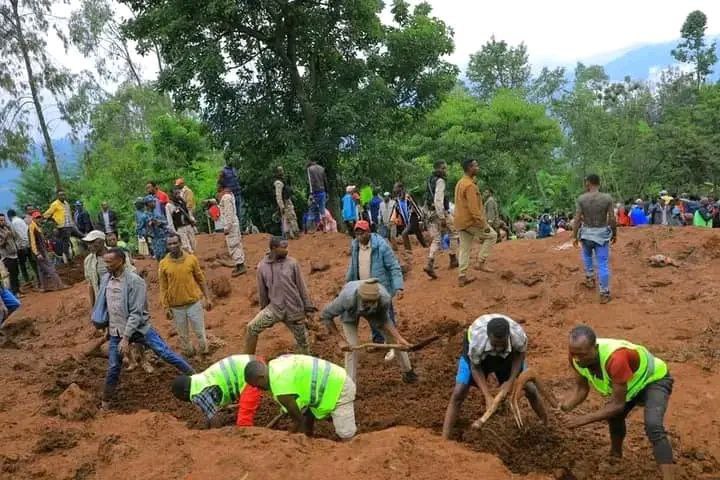News: Scramble to save up to 30 artisanal miners trapped in Amhara state opal mining cave for 4th day

Traditional artisanal miners in the remote South Wollo zone. Photo: Screenshot/AddisStandard
Addis Abeba- Local authorities in the opal mineral rich South Wollo Zone, in Amhara regional state, said they are desperately scrambling to save the lives of up to 30 artisanal miners who are trapped inside an opal mining cave for the fourth day.
According to zonal authorities, the artisanal miners went missing on the night of Thursday 8 February, when the mine caved on them. They are estimated to number more than twenty youths who were trying to excavate opal ore in an area specifically known as “018 Alewhat” Kebele in the remote Delanta district of South Wolo zone, in Amhara regional state.
Despite efforts by local people and officials, the status of the trapped miners remains “difficult to know.” Zonal Communication office said that the position of the mine has made it for machines to reach and extract the trapped miners, reducing efforts to to digging by hands.The opal mine is believed to be around 750 meters long, the local authorities said.
District Administrator Ayalew Berihun is quoted by the BBC Amharic as saying that although more than 500 people went to the place to help with the rescue work, the steep road leading to the area was has complicated efforts as only around ten people at a time, are making rescue efforts.
The tragedy marks another hiccup to compound the otherwise mineral rich zone of the crisis-hit Amhara region.
In November last year, South Wollo Zone officials admitted that production of opal was disrupted by conflict in the region. The zone said that the disruption was impacting the local economy and the livelihoods of those involved in the industry.
Nearly 30 different types of minerals, including opal, amber, jasper, onyx, tourmaline, quartz, and gypsum, have been identified in the area, where the opal deposits were first discovered in 2008, quickly making Ethiopia the world’s second-largest exporter.
Some 12 high-potential production licenses have been granted, with four in good standing and the remaining not operational. Over the past three months, the zone has exported 6,532 kilograms of opal to international markets, resulting in a revenue of almost six million birr, the zone further said.
However, the lack of legal framework, skilled manpower, the presence of conflict and absence private investment have besieged the industry.
Traditional miners who sell their products through local cooperatives also constitute significant part of the mining activities, with the risk to their lives. Berihu Abere, a labor inspector, described the activities “as very dangerous because they have no protection.” AS








